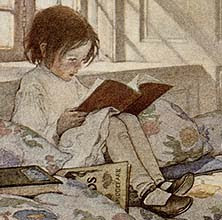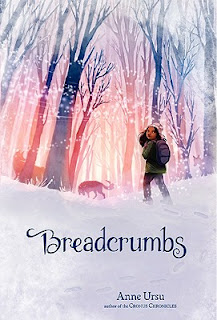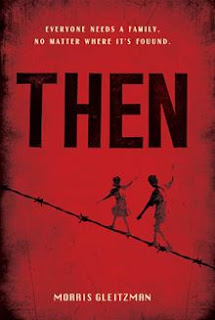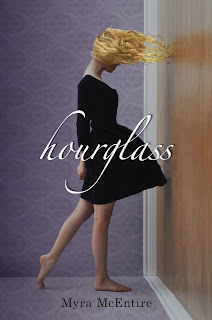 Title:
Title: Breadcrumbs
Author: Anne Ursu
Publisher: Walden Pond Press (HarperCollins), 2011 (Hardcover)
Length: 312 pages
Genre: Children's Fairy Tale/Fantasy
Started: October 17, 2011
Finished: October 21, 2011
Summary:From Goodreads.com:
Once upon a time, Hazel and Jack were best friends. They had been best friends since they were six, spending hot Minneapolis summers and cold Minneapolis winters together, dreaming of Hogwarts and Oz, superheroes and baseball. Now that they were eleven, it was weird for a boy and a girl to be best friends. But they couldn't help it - Hazel and Jack fit, in that way you only read about in books. And they didn't fit anywhere else.
And then, one day, it was over. Jack just stopped talking to Hazel. And while her mom tried to tell her that this sometimes happens to boys and girls at this age, Hazel had read enough stories to know that it's never that simple. And it turns out, she was right. Jack's heart had been frozen, and he was taken into the woods by a woman dressed in white to live in a palace made of ice. Now, it's up to Hazel to venture into the woods after him. Hazel finds, however, that these woods are nothing like what she's read about, and the Jack that Hazel went in to save isn't the same Jack that will emerge. Or even the same Hazel.
Inspired by Hans Christian Andersen's "The Snow Queen," Breadcrumbs is a story of the struggle to hold on, and the things we leave behind.
Review:I have been so lucky with my recent books, they've all been ones I've been dying to read and have all really impressed me, and Breadcrumbs continues this trend.
Breadcrumbs is a modern fairy tale retelling of "The Snow Queen", and is one of few fairy tale retellings that is amazingly well done. Hazel is 11 years old and doesn't really fit in anywhere. She was adopted from India as an infant by her white parents who have recently divorced, and is quite conscious of the unspoken questions on people's faces when they see her with her mother. She is highly imaginative (having read lots of stories), and very in tune with her emotions; she doesn't get self-conscious about twirling around in a snow fall in her pajamas, savouring the magic of falling snow, a behaviour that most children reign in around that age. The only person she fits with is Jack, her best friend since forever. Since Jack and Hazel now attend the same school, she depends on his friendship even more to help her transition from a private school that valued her imagination to a normal public school that just wants her to act grown up. Jack has his own issues as well; his mother is deep in the throes of depression to the point where she is like a non-entity, and his father does his best to keep life as normal as possible. At the age where boys and girls begin to have more romantic feelings for each other rather than platonic friendships, Jack has to carefully balance his relationship with Hazel and that of his male friends, and they begin to break apart. Hazel's mother lovingly tries to get Hazel to form friendships with other girls, but Hazel is adamant that Jack needs her as much as she needs him, and in a way she's right.
Whereas the first half of the book sets the stage for Hazel and Jack and shows their day-to-day existence as relatively innocent children dealing with heavy stuff, the second half is the journey that is growing up that both Hazel and Jack go through in their own way. Incorporating the 'Snow Queen' elements, Jack is struck in the eye by a ice shard that penetrates to his very heart, making him cold to Hazel and changing his personality from a boy that loves stories and make believe to a boy that loves the unbreakable truth of mathematics. He goes off with the snow queen/white witch herself to her ice palace, and once Hazel finds out where he's gone she packs up and ventures into the woods, deciding she must rescue him. I loved the ice metaphor for growing up and changing (for the worse) as we grow, the little lines dropped by the various inhabitants of the woods reinforce that the witch's realm is a cruel one and that she's always there but everyone just tries to ignore the fact that she is so they can be happy. The second half is filled with fairy tale tropes and images from the woodsman and the wolves to The Little Match Girl, and as such is written much more surreally and lyrically than the first half (though the writing is just as beautiful in the first half, just not in that 'other-worldly' quality of the second half). Some of my favourite quotes out of this book come from this second half; both of the witch speaking to Hazel when she comes to rescue Jack:
"You know you'll never get him back," she said. "Not really. Even if you take him, it won't be the same." (pg. 281)
"Know this," she said, her voice as clear as a shard of glass. "If you take him away, he will change. And someday he will be a man, and you will not even know him, and he will only think of you with a passing smile."
At least he would think of me, Hazel wanted to say...It was not supposed to be this easy. This was to be the final confrontation. There was to be struggle, torment, despair. But the witch-who was the only person in the woods who wanted nothing-was not what Hazel had to defeat." (pg. 282)
I love these, they're not complicated quotes by any means, but convey meaning in a writing style that is very rarely targeted towards children. The first thing I thought of when I got a sense of the author's style was that this felt more like some surreal story for adults that remember childhood clearly, but then I changed my mind that it is for children too, it's just rare to find an author that will write a middle grade novel in this manner that doesn't talk down to kids. So if nothing else, read this just for the writing, it is truly beautiful on so many levels.
I loved Hazel, it's hard not to, she's portrayed so sympathetically; she also reminded me a lot of myself personality-wise at that age (just minus the male best friend). On a superficial level, I appreciated that she wasn't white; children's books need more multicultural, varied characters than what they usually get, so that aspect pleased me. I also liked the way Hazel's mother was portrayed. Usually parents aren't painted in the best light in children's literature, but Hazel's mom, although she really doesn't understand her daughter, she truly loves her and really tries her best to help in what ways she can, and that comes across clearly. At least this helps perpetuate to kids that yes, a lot of adults/parents won't get you, but there are those that still love you and honestly want to help you and not screw you around. I also loved the addition of Adelaide's Uncle Martin, the one adult that is grown up but still retains the personality of one of the kids, and gets mocked for it; it was another example of growing up, but one where growing up can be done on a person's own terms (ie. I can be grown up in the mature sense but not lose the magic and wonder).
There was only one detriment that I could really think of, and that's that the ending felt rushed and incomplete. I'm not sure what exactly I was expecting, but the ending I got left me a little unsatisfied....not quite sure what I would even suggest in its place, I just know it didn't fit...
Recommendation:Stunning, beautiful, and wise; this is a practically perfect offering that is simply enchanting. Gorgeous writing, realistic situations and characters, and a seamless blending of the fairy tale elements into a modern story. Just read this, you won't be disappointed, it's one of the best children's books I've read this year, and it's one that adults will fall in love with too.
Thoughts on the cover:I'll admit, I had cover lust for this book when I first saw it. The winter forest scene at sunset with the whites, oranges, pinks, and purples is beautiful eye candy; and Hazel off to the side with the wolves in the background are placed just right so your eye is drawn into the core of the forest.























